Whether you’re trail running, cooking outdoors, or trying to find something in your tent, you can’t beat the hands-free convenience of a headlamp. So, it’s no surprise that the question for most people isn’t whether to choose a headlamp or a flashlight but rather which headlamp to choose. With a wide range of functions, and battery types, any purchase decision requires a little research. Luckily, you’ve found this very comprehensive guide to headlamps and are just a few minutes away from knowing all you need to know about your next purchase.
Factors affecting headlamp choice
When choosing a new headlamp, it’s important to consider performance and usability, as well as the pros and cons of different battery types. Some information will be readily available as specifications (some of which need to be read with careful skepticism) while considerations will require further research – using reliable reviews – or even your own hands-on test.
Lumens
The amount of light energy emitted by a headlamp is often the first thing that people look at, but this number can be misleading. Even though measurements are reliable, lumens are not an accurate indication of performance. Two headlamps with the same light output can have very different beams, depending on their optics. High quality optics make the most of available lumens by focusing the light into a bright and evenly lit spot. And you’ll want to check the beam quality of two similarly rated headlamps before making a decision. Fortunately, some gear stores have darkened rooms specifically for testing headlamps.
Beam distance and quality
Most mid-range headlamps have two beam modes: wide (floodlight) and narrow (spotlight). It’s the narrow beam that manufacturers and testers are referring to when they specify beam distance. Longer beam distances are particularly useful where you have to follow trails which are marked by cairns and blazes that are a distance apart. Besides this spec, you’ll want to check the quality of light produced by a light’s focusing optics. The beam should offer an even luminosity and be direct enough to throw objects into relief. A murky light won’t create enough contrast to properly discern the size and shape of objects.
Battery run-time
Battery run-time might not matter when you only need your headlamp to get to the campsite bathroom, but it does become a factor when you have a long hike home in the dark. Ideally, a headlamp’s battery would last for several hours even when in the high setting, but many models require you to switch to medium mode to conserve batteries beyond a few hours. Also know that claimed burn times can be ‘slightly exaggerated’. Manufacturers perform their tests in ideal conditions, and you’re unlikely to get the same run-time in the real world. Always carry spare batteries if you expect to push the limits of your battery run-time.
| setting | lumens | distance | run-time |
|---|---|---|---|
| low | 8 lm | 9 m | 150 h |
| med | 180 lm | 45 m | 10 h |
| high | 400 lm | 100 m | 5 h |
The above table shows how different power settings can affect a headlamp's run-time.
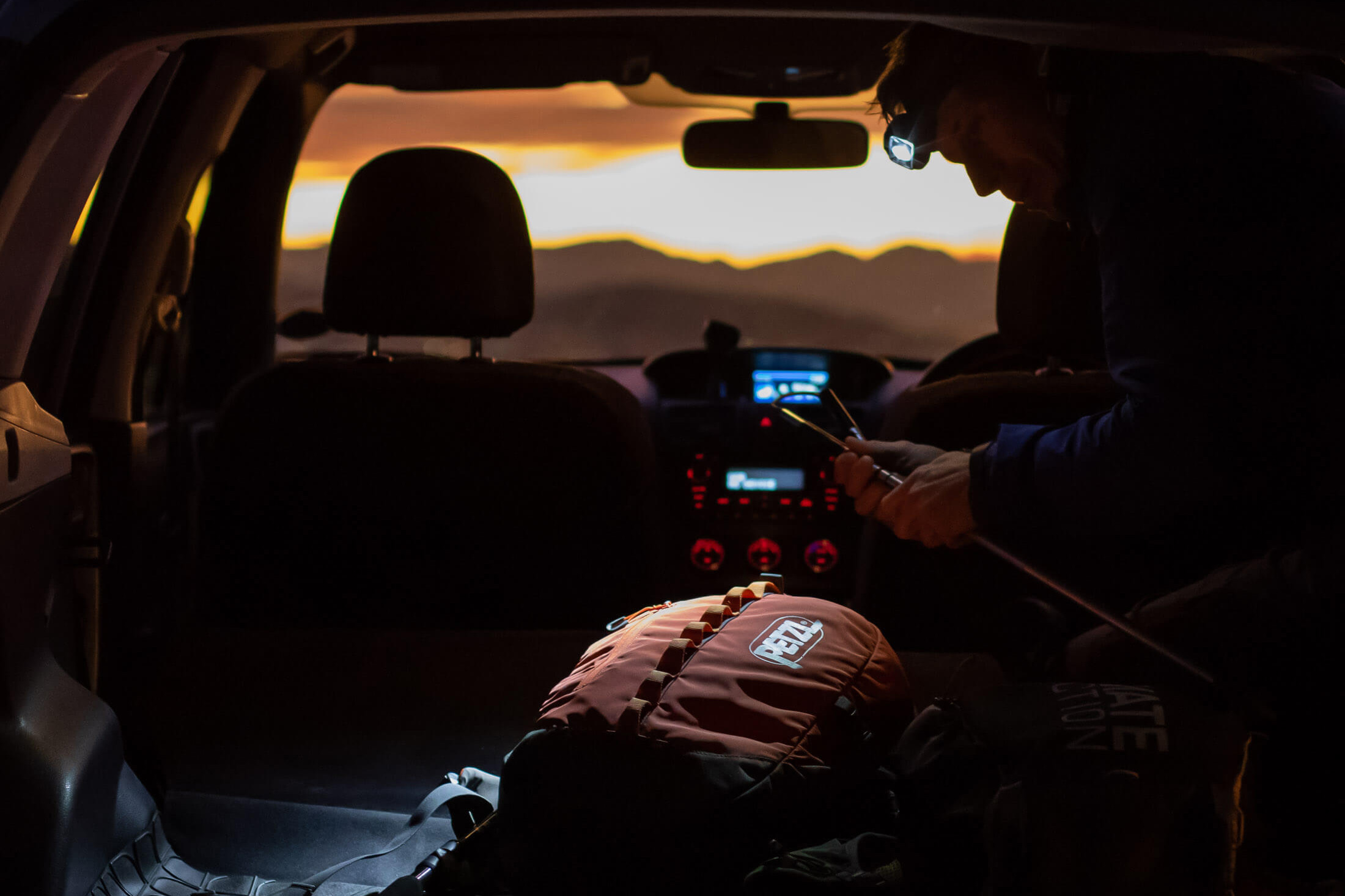
Economy
When shopping around for a new headlamp, don’t just consider the sticker price. Your choice of battery type could ultimately lower or raise the cost of a headlamp over time. Non-rechargeable headlamps are almost always cheaper than rechargeable models at the point of sale, but a non-rechargeable model can use hundreds of batteries over its lifetime if used frequently. The cost of these can push the total cost of owning a non-rechargeable well above what you would have paid for a rechargeable headlamp. With the latter, you’d also help keep all those AAA batteries out of landfills.
Power-replenishment options
As rechargeable headlamps have become increasingly popular, manufacturers have pushed to solve some of the challenges associated with lithium ion batteries. One of the biggest hurdles was giving people a way to recharge a battery when out on the trail. Since most portable powerbanks charge via USB, many manufacturers have chosen to solve this problem by producing batteries that are USB-rechargeable. But, you might not want to carry a power bank, in which case your only option is swap your lithium ion battery with fresh alkaline batteries, something that’s possible in a growing number of headlamps.
Usability
A good headlamp will sport features (coming up next) that expand functionality and make it easier to use. The most important features are those that allow you to easily gauge the battery level and select different beam modes. And more sophisticated headlamps will include nice-to-haves like brightness memory. But for a true test of usability, try to turn on your headlamp and select a specific function when in the pitch dark. Buttons should be easy to find by feel, and function controls should be intuitive or at least easy to remember.
Headlamp features
Lockout mode
Some headlamps have a lockout mode to prevent a bump from accidentally turning on your headlamp and draining its battery. In most cases this is activated by pushing down one or two buttons for a specified length of time. This feature is handy if you throw your headlamp into a pack with other pieces of gear that might bump the power button hard enough to turn it on.
Tilt
Some headlamps, like those made by Petzl, feature a tilting pivot that allows you to angle the light downwards once the strap has been secured to your head or helmet. This can be useful when on something at about chest level, but it’s nothing that a good wide beam can’t compensate for.
Red light
A red light function is useful for three reasons: It conserves battery life, it won’t blind those around you, and it helps preserve night vision since it doesn’t take nearly as long for your eyes to adjust to the dark, once you have turned it off. This is particularly useful if you intend to do any star-gazing.

Wide beam & spotlight modes
The wide (floodlight) setting on many headlamps is ideal for close proximity work such as preparing meals while the narrow (spotlight) setting is the best setting for navigating in the dark. Almost all mid-range headlamps have these functions, and, as I’ve already pointed out, it’s really the quality of the narrow beam that matters.
Strobe
These are a pet hate of mine. Strobes do not make a runner or cyclist more visible, but they do make it more difficult to judge distance or discern the outline of anyone wearing one. If you want to be visible to traffic, a constant light source will do a better job, and it will make it much easier to see where you are going.
Dimming
Most headlamps have high and low settings but some models, particularly those made by Black Diamond, take things a step further by including a dimming function. This allows you to get just the right amount of light for the task at hand, rather than limiting you to the predetermined levels provided by the manufacturer.
Brightness memory
Brightness Memory allows you to turn the light off and on at a chosen brightness instead of having it revert back to full power every time you turn it back on. This is very useful when you want dimming to be at a certain level and you don’t want to have to adjust it every time you turn your headlamp back on.
Power meter
Regulated output headlamps benefit the most from this feature, but power meters are also useful on headlamps that aren’t output regulated. Both Black Diamond and Petzl make headlamps that give some indication of how much power is remaining. However, the Petzl Actik has only a simple reserve battery warning while the Black Diamond Revolt features a six-level power meter.
IP weatherproof ratings
The IP Code or International Protection Marking classifies and indicates ‘the degree of protection provided against intrusion for dust, accidental contact, and water by mechanical casings and electrical enclosures.’ This system is used to test everything from cellphones to cameras but is standardised so that everyone can understand what it means regardless of the device.
IP codes are comprised of a prefix and two characters or values:
IP — This prefix tells you that you’re looking at an IP code.
X — A number from 0-6 indicates solid particle protection. Headlamps that aren’t ‘dustproof’ tested get an “X”. Headlamps that are completely dustproof get a 6.
Y — A number from 0-9 indicates the level of protection against water damage. This is the more important of the two factors.
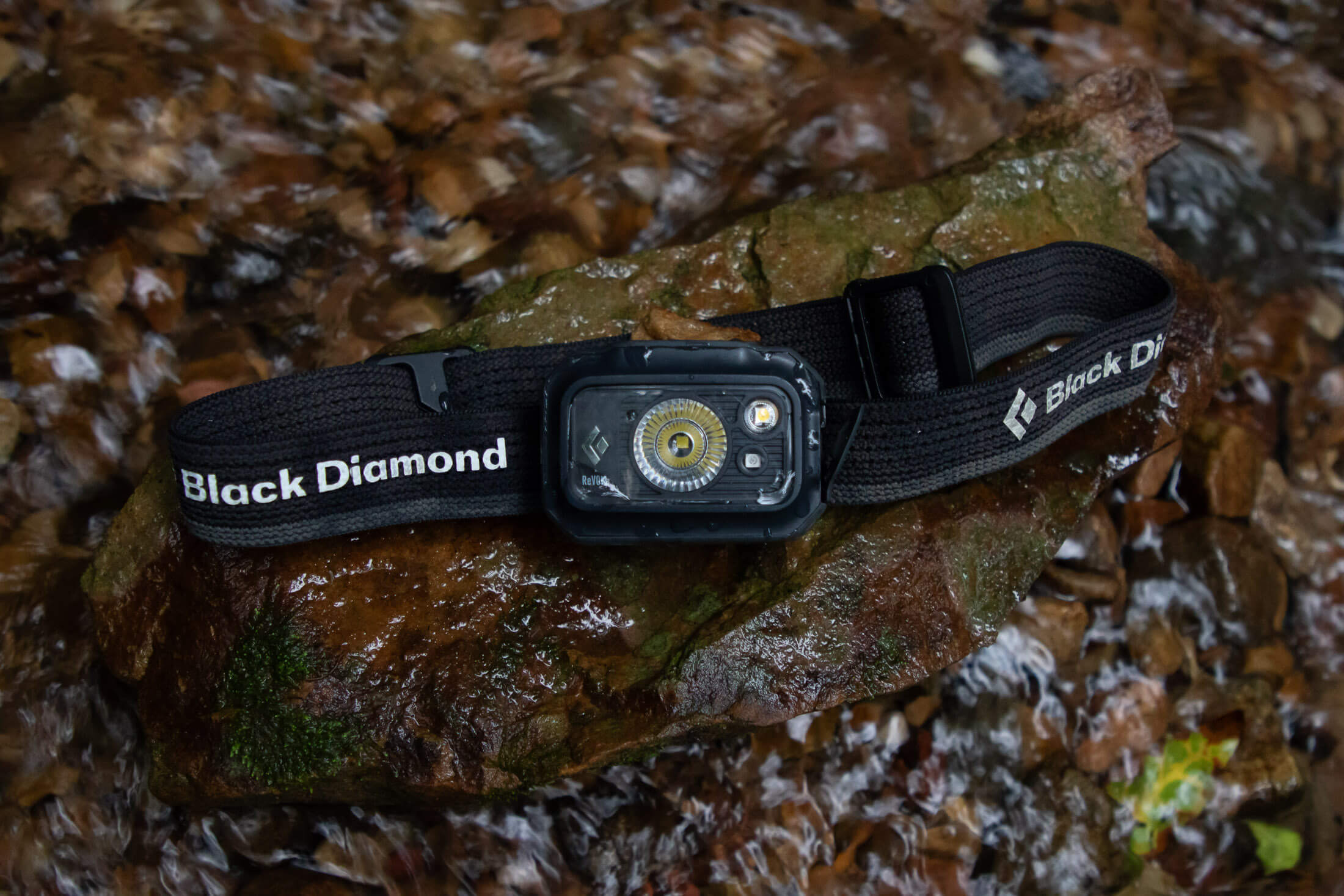
Many headlamps are dust proof but just aren’t tested for it since it’s not nearly as important as water resistance. The table below displays some common IP codes and the kind of protection these devices claim to offer.
| IPX4 | Water splashed onto the device |
| IPX7 | Temporary submersion in water |
| IP67 | Temporary submersion in water and dust |
| IP68 | Continuous submersion in water and dust |
Battery types
Headlamps can run on single-use cylindrical batteries, rechargeable cylindrical batteries, or lithium ion batteries. And many models can use all three types. To choose the best headlamp and batteries for your needs and budget, it helps to know the advantages and disadvantages of each.
Alkaline and lithium – single-use batteries
Alkaline batteries are cheap. But you get what you pay for, and these offer only moderate battery life. Even if you can keep them out of a landfill by recycling them, it makes little sense to carry six cheap batteries when three more expensive batteries will provide the same amount of power at a lower weight. Lithium batteries are lighter, last twice as long as alkaline batteries, and are a better option if your headlamp can take them (Most can, but read the manufacturer’s instructions to make sure). Even if your headlamp can run on both, you shouldn’t mix alkaline batteries with lithium ones.
Nickel-metal hydride (NiMH) – rechargeable batteries
Of all the different types of rechargeable cylindrical batteries, NiMH batteries offer the most energy and the slowest self-discharge rate (power loss when not in use), making them the firm favourite for people who want to use rechargeable batteries but don’t have a lithium-ion-powered headlamp. Compared to single-use batteries, NiMH batteries discharge faster when not in use, and they’re more expensive. But you’ll more than make up for the greater cost by not having to buy new batteries all the time.
Lithium ion – rechargeable brand-specific batteries
Lithium batteries are similar to cellphone batteries, and they’re charged the same way – using a USB cable. Lithium ion batteries have three advantages over NiMH batteries. They can be charged many more times than NiMH batteries; they leak a charge more slowly than any other kind of rechargeable battery, and they can be charged via USB, making it possible to charge them with a solar charger or power bank. In fact, their only downsides are that they’re more expensive and are designed to power a particular model or brand.
Headlamp types
Besides different types of battery, there are also different types of headlamps, each with its own pros and cons, and each suited to a specific purpose or use.
Lightweight rechargeable headlamps
Although some models are designed with a specific purpose in mind – like running – most small to mid-sized rechargeable headlamps are suitable for a wide range of activities. Featuring many of the same functions found on hybrid fuel headlamps, fully featured rechargeable headlamps are as capable as dual fuel alternatives while being significantly lighter and more compact. The only downside to this type of headlamp is that there’s no way to power it, other than to recharge it, once the battery has died. This makes rechargeable headlamps better suited to activities that are unlikely to last longer than several hours (always check run time before purchasing). For multi-day backpacking trips, a hybrid fuel headlamp would be a better bet.
- Coast RL30R (Buy at REI)
- Black Diamond Sprint 225 (Buy at REI)
- Ledlenser HF4R Core (Buy at REI)
- Petzl Swift RL (Buy at REI)
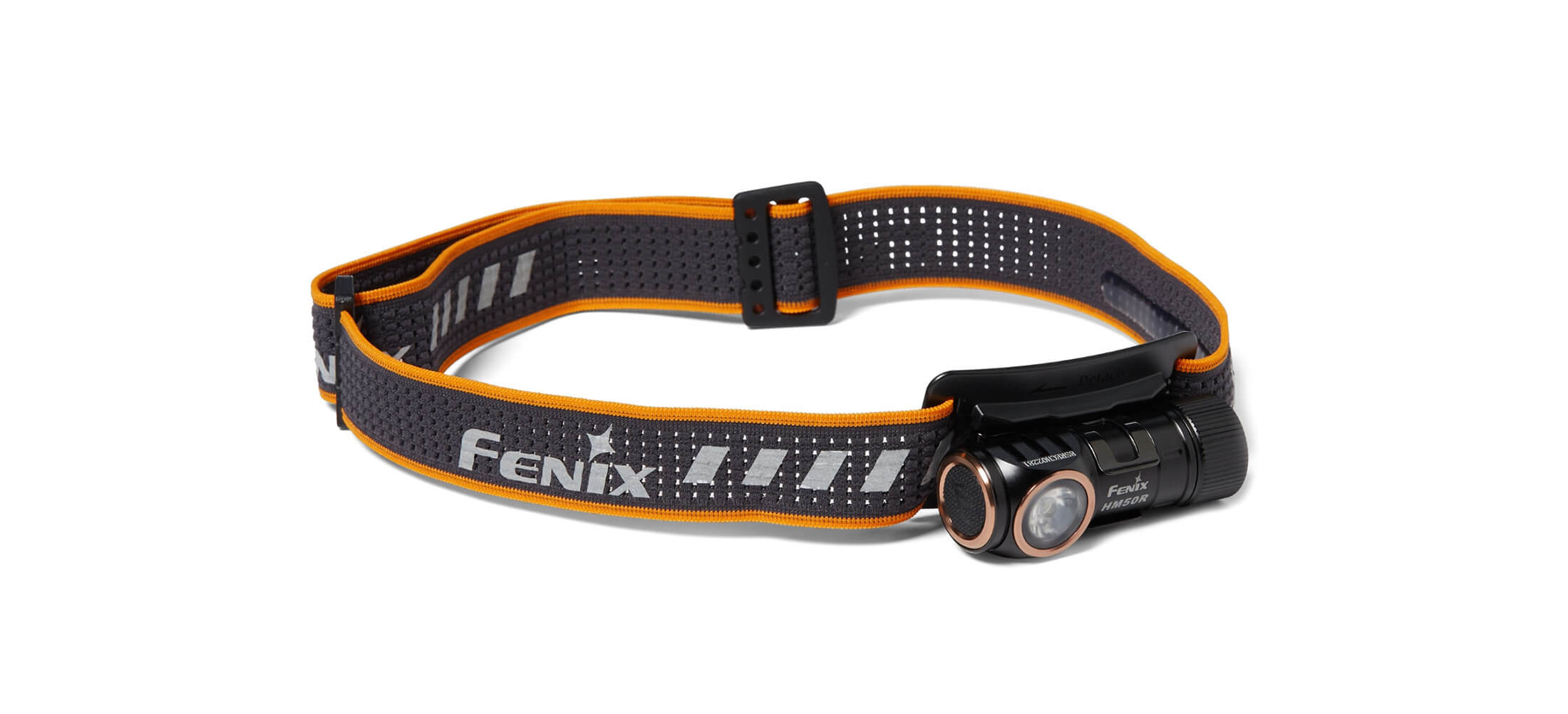
Hybrid fuel headlamps
Mixed fuel headlamps can take regular batteries or a rechargeable lithium battery. This feature is useful for activities that require extended headlamp use – you can simply swap out the rechargeable battery for some regular AAA batteries when it runs flat. Since most of these rechargeable batteries take a USB cable, they can be recharged using a solar charger or power bank. In terms of size and weight, this type of headlamp is typically larger and heavier than headlamps with integrated rechargeable batteries, but a few, like the Black Diamond Spot 400-R, still only weighs 2.7 ounces, making it a good choice for climbers who want to keep the bulk and weight of their kit to a minimum. Headlamps like the Petzl Tikkina and Black Diamond Storm 450 don’t come with a lithium ion battery but can run on one if it’s bought separately.
- Black Diamond Spot 400-R (Buy at REI)
- Petzl Tikka Core (Buy at REI)
- Black Diamond Storm 500-R (Buy at REI)
- Fenix HM65R (Buy at REI)
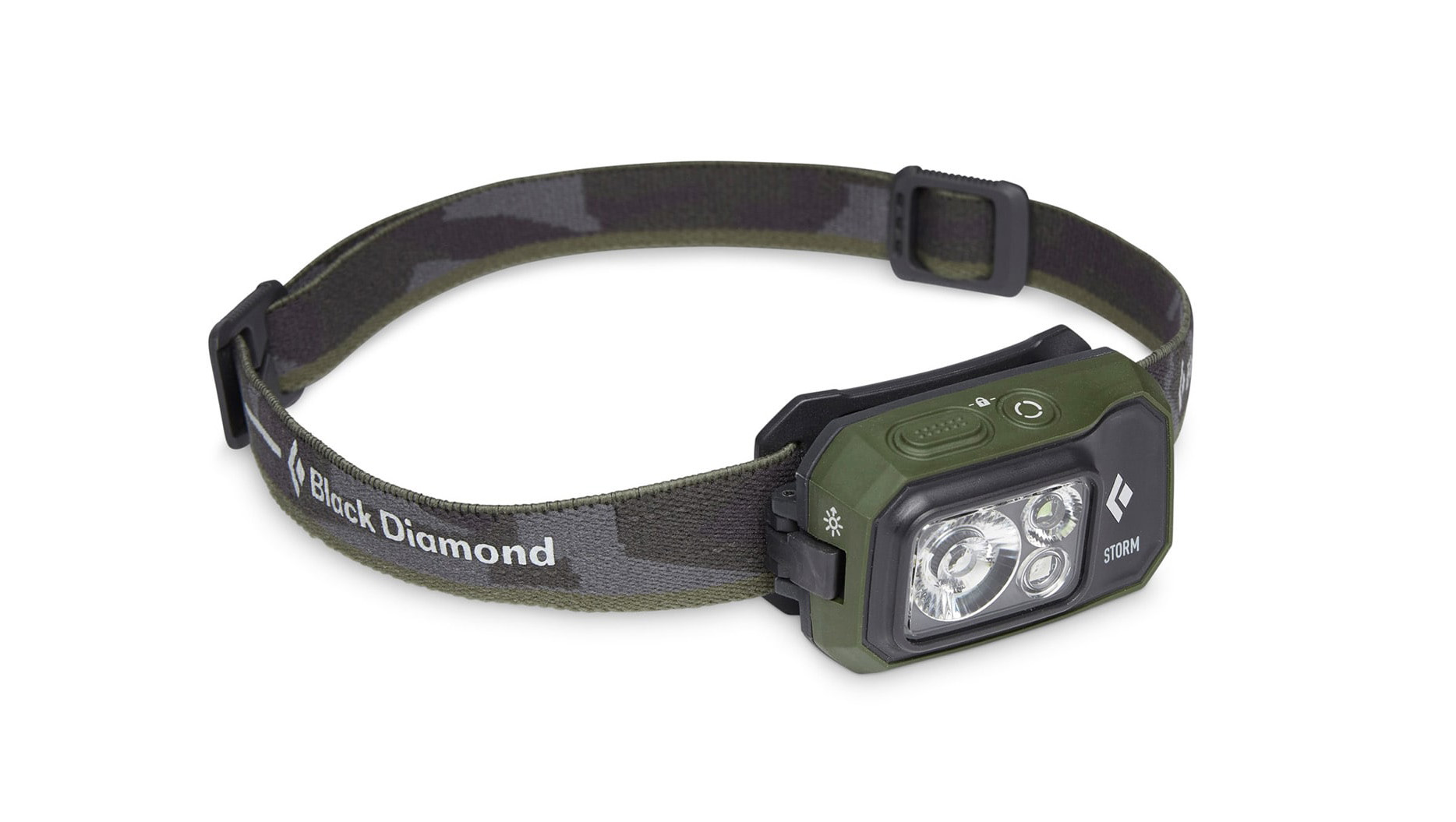
High output headlamps
High output headlamps can be identified by their external battery packs (AA or lithium ion), which allow them to put out 1000 to 2800 lumens. That’s a lot more than you need for a nighttime walk in woods but is just what’s needed for caving and winter sports. Skiers need more powerful lights for the same reason that mountain bikers do. When speeding through the trees, you need to be able to see further ahead to choose a good line. Many models also have an IP rating of IPX6 or IPX7, making them well suitable for caving and search & rescue.
- Black Diamond Distance 1500 (Buy at REI)
- Petzl Duo RL (Buy at Backcountry.com)
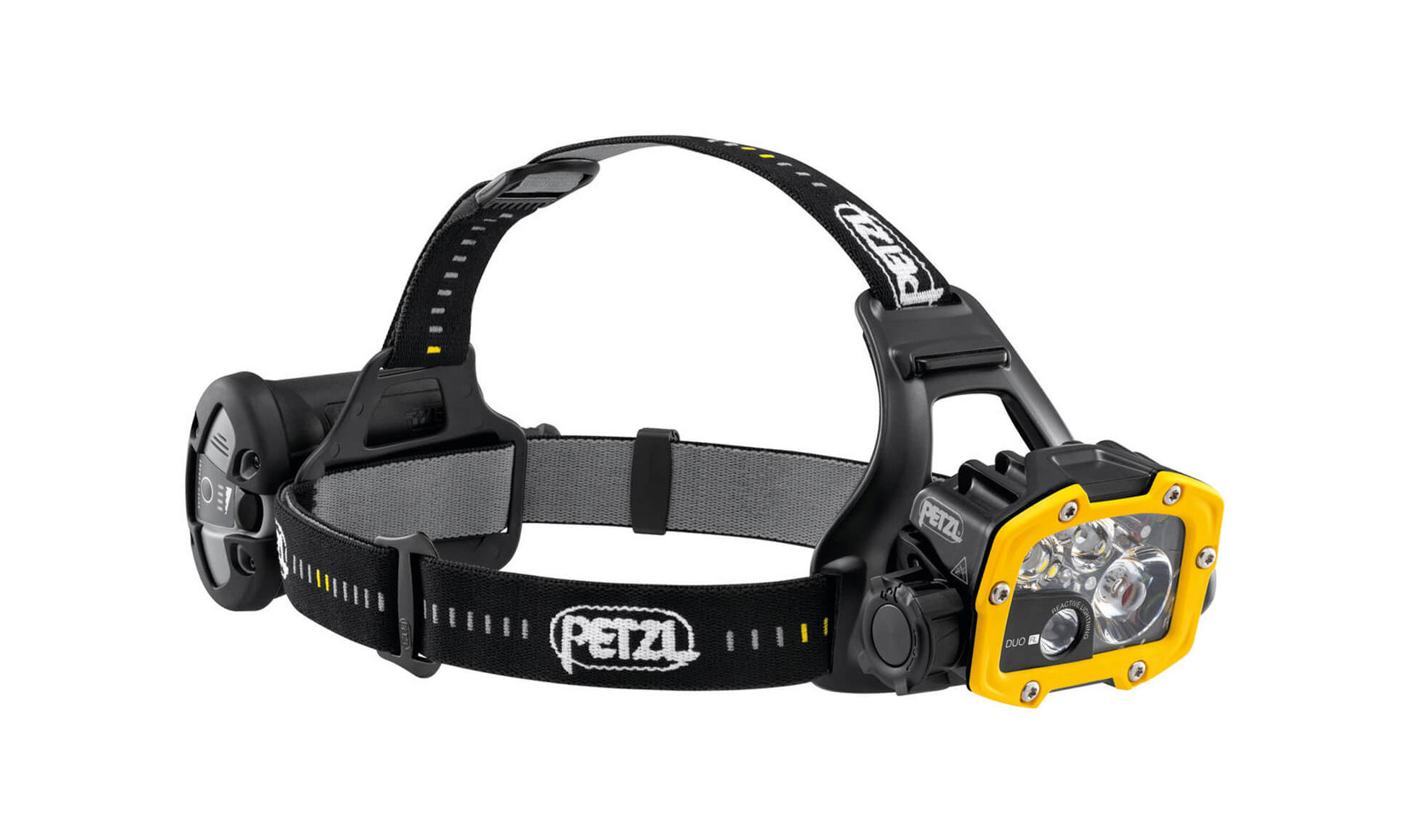
Headlamps for a different activities
A general purpose AAA-powered will suffice for most outdoor activities, but there are few activities where you might need something more specialised. These are my recommendations for several common uses.
Camping
To find your way around the campsite and rummage through the tent, you only need a simple utility headlamp. A red light function will be useful, but you don’t need that top-of-the-line model with all the bells and whistles. If you expect to run your headlamp for hours, simply pack another several AAA batteries - three or six for three-cell headlamps and four or eight for a four-cell headlamp. If you’re on a budget, look no farther than Petzl’s Tikkina, but if you’re prepared to pay an additional $40 for more features, look at the Black Diamond Storm 450.
Backpacking
If you’re heading into the backcountry, your headlamp will likely be your only light source on most nights. Given that you might have to navigate difficult terrain after dark and in unpredictable conditions, you probably want something with a stronger beam (at least 300 lumens) and decent weatherproofing (IPX4). Both AAA-powered and hybrid designs are okay, since you can always replace spent batteries with fresh AA/AAA batteries, but think twice before buying a headlamp with an integrated rechargeable battery. You’ll need to pack a power bank to charge it, and then it will be almost impossible to use it while it’s charging.
Running
If your headlamp is going to be used primarily for nighttime runs, you should look for a headlamp with the following features: rechargeable batteries to keep running costs down (pun not intended) and either a very light design or additional straps to keep the headlamp from bobbing up and down. For running on paved surfaces, you don’t need more than a few hundred lumen (The Black Diamond Sprint 225 would fit the bill), but it you are going to run trails after dark, you will need a headlamp powerful enough to give definition to features in the trail – at least 350 lumen, as produced by the Black Diamond Cosmo.

Caving
For occasional recreational caving, your hiking headlamp will suffice, but if you plan to spend days underground exploring new cave systems, you’re going to need something more specialised – something rugged and dependable with a longer run-time and greater output. In that case, look at the high output headlamps produced by Petzl or Black Diamond. Just make sure that your headlamp can be mounted to your helmet. If straps are a problem, the Petzl Duo RL will be your best option as it can be mounted directly to a helmet without the use of a strap (but using accessory plates).
Rock climbing
For days that start early and finish late, you’ll need a headlamp that can help you negotiate a 4th class approach and run long enough to help you find rappel stations in the dark. A hybrid design that can take both a lithium ion battery and regular AAA’s suits this purpose well. But if your headlamp is likely to be used only in the event of an unexpected late descent, you might want to go with a lightweight rechargeable headlamp. Or better yet, go with a headlamp that offers both – hybrid fuel in a lightweight design – like the Black Diamond Spot 400-R. Just remember to also carry spare batteries.
Use and care
Take it from a guy who has destroyed several headlamps. You need to give a headlamp a little TLC if you want it to live a long and happy life. Here are the most important do’s and don’ts.
Don’t store AA/AAA batteries in the headlamp
It’s not a good idea to store AA or AAA batteries in your headlamp for an extended period since these can leak acid, destroying your headlamp’s circuitry. At most, leave batteries in your headlamp for trips lasting up to a few weeks. This is just another reason why it’s usually better to pay extra for a rechargeable headlamp.
Don’t mix different types of battery
Mixing battery types can reduce performance, cause batteries to leak or rupture, or even damage your device. Be nice to your headlamp. Use either alkaline, lithium, or NiMH cylindrical batteries, not a combination of these. It’s also important to note that some headlamps can only work with regular or rechargeable batteries, not both.
Don’t mix used batteries with fresh ones
It’s not recommended to mix old and new batteries as this can reduce performance and shorten run-time. Mark half-life batteries when you remove them for storage, or keep them aside for some other use. The same applies to rechargeable NiMH batteries. Use and charge the same two or three batteries together for the best performance.
Carry spare batteries
Always pack spare batteries – preferably alkaline or lithium as these will last longer when not in use. If you are worried about moisture, you can wrap them in cling film and then tape, which will keep them together and protect them from water and other liquids. Alternatively, if space isn’t an issue, you can put them in a small watertight container.
Get more advice from this gearhead
You now know everything you need to know about headlamps. But don’t stop here. On this website you’ll find many more in-depth gear guides on everything from backpacks to belay devices as well as many more how-to articles. Look for these in the relevant sections in the categories, or better yet, sign up for my newsletter to get all the latest from Trail & Crag delivered straight to your inbox.
